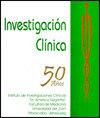Relationship between peripheral arterial disease severity determined by the Glass classification and triglyceride-glucose index; novel association and novel classification system.
IF 0.1
4区 医学
Q4 MEDICINE, RESEARCH & EXPERIMENTAL
引用次数: 0
Abstract
Peripheral arterial disease is a serious clinical manifestation caused by atherosclerosis. It is one common cause of morbidity and mortality worldwide. It is commonly seen in males, and its (prevelance) increases with age. It is most prevalent with smoking, hypertension, diabetes mellitus and hyperlip-idemia. Novel studies investigate the relationship between triglyceride-glucose index (TyG) and cardiovascular diseases. Studies investigating the association of this index and peripheral arterial disease and disease severity are generally done by using The Trans-Atlantic Inter-Society Consensus (TASC) classification. We aimed to study this association by using the new Global Limb Anatomic Staging System (GLASS) classification. Two hundred patients between 25 to 90 years old diagnosed with peripheral arterial disease and admitted to the hospital for peripheral arterial angiography between July 2021 and December 2021, were evaluated retrospectively with blood parameters and angiographic images. Patients were divided into two groups: moderate (group 1; n=58) and severe (group 2; n=142) according to the GLASS classification. No statistical differences were observed for comorbidities and repeated interventional pro-cedure rates (p=0.164). Triglyceride values were found to be statistically dif-ferent between groups (p=0.040). TyG was found higher in group 2 (p= 0.04). According to the binary logistic regression model, only TyG was found to have a significant effect as a diagnostic factor (p=0.011). TyG was also significantly correlated with the Rutherford (p=0.012) and GLASS classification severity (p<0.001). Peripheral arterial disease and disease severity could be easily moni-tored with simple calculable TyG. In this way, precautions could be taken, and morbidities could be prevented.通过Glass分类确定的外周动脉疾病严重程度与甘油三酯葡萄糖指数之间的关系;小说联想和小说分类系统。
外周动脉疾病是动脉粥样硬化引起的一种严重的临床表现。它是全世界发病率和死亡率的一个常见原因。它常见于男性,发病率随着年龄的增长而增加。最常见于吸烟、高血压、糖尿病和高脂血症。新的研究探讨甘油三酯-葡萄糖指数(TyG)与心血管疾病的关系。研究该指数与外周动脉疾病和疾病严重程度的关系通常采用跨大西洋社会共识(TASC)分类。我们的目的是通过使用新的全球肢体解剖分期系统(GLASS)分类来研究这种关联。在2021年7月至2021年12月期间,200名年龄在25至90岁之间诊断为外周动脉疾病并入院接受外周动脉血管造影的患者,通过血液参数和血管造影图像对其进行回顾性评估。患者分为两组:中度(组1;N =58)和重度(2组;n=142)。合并症和重复介入手术率无统计学差异(p=0.164)。甘油三酯值组间差异有统计学意义(p=0.040)。2组TyG升高(p= 0.04)。根据二元logistic回归模型,只有TyG作为诊断因素有显著作用(p=0.011)。TyG与Rutherford (p=0.012)和GLASS分级严重程度也有显著相关(p<0.001)。简单可计算的TyG可方便地监测外周动脉病变及病情严重程度。这样,就可以采取预防措施,预防发病。
本文章由计算机程序翻译,如有差异,请以英文原文为准。
求助全文
约1分钟内获得全文
求助全文
来源期刊

Investigacion clinica
MEDICINE, RESEARCH & EXPERIMENTAL-
CiteScore
0.20
自引率
50.00%
发文量
2
审稿时长
>12 weeks
期刊介绍:
Estudios humanos, animales y de laboratorio relacionados con la investigación clínica y asuntos conexos.
 求助内容:
求助内容: 应助结果提醒方式:
应助结果提醒方式:


